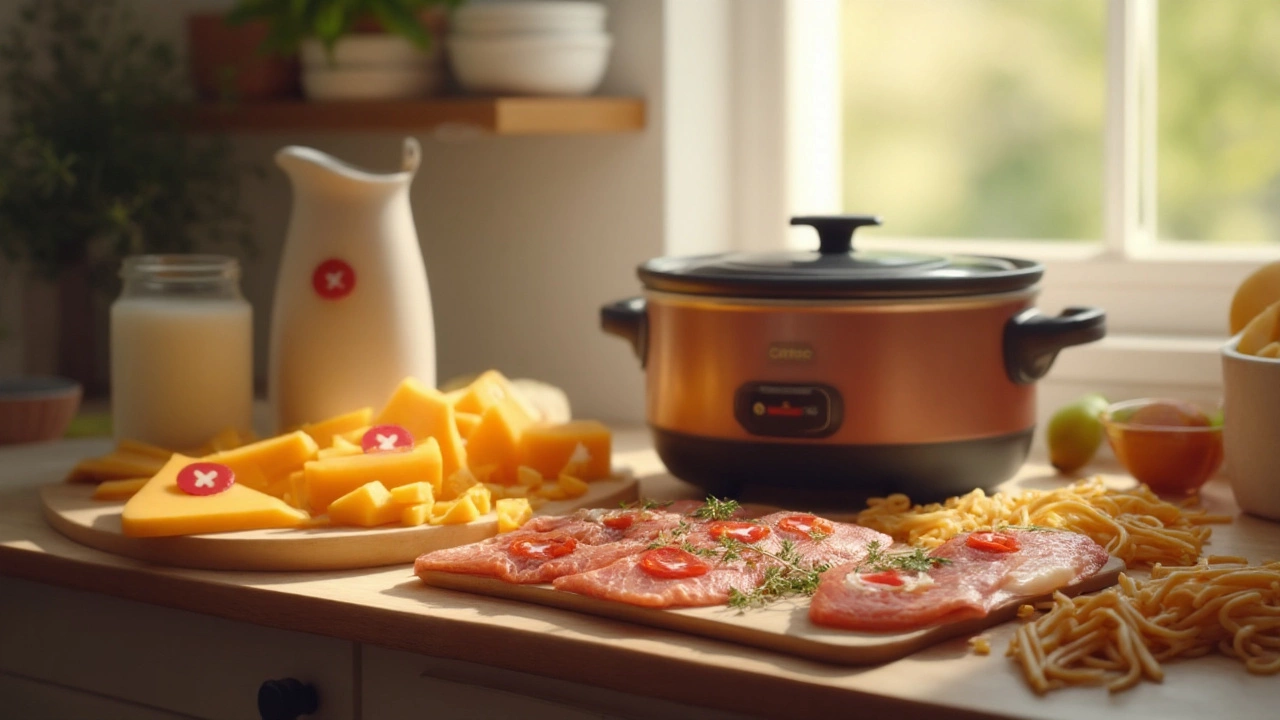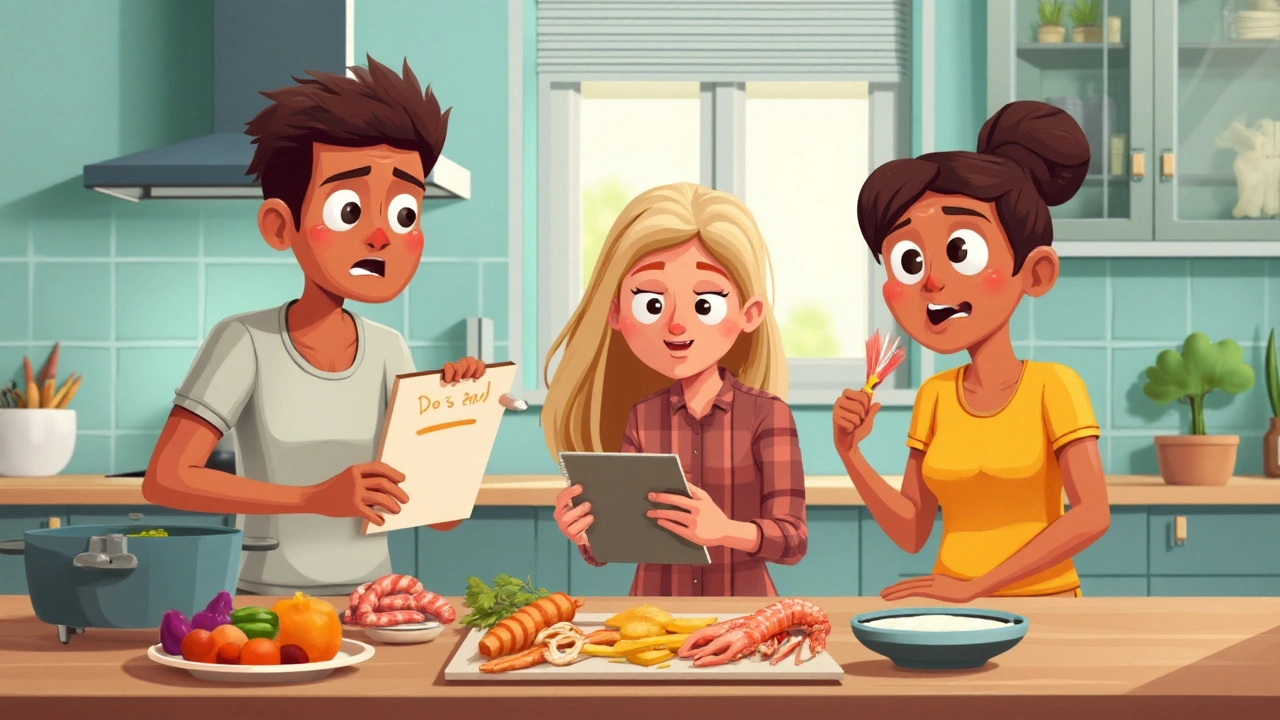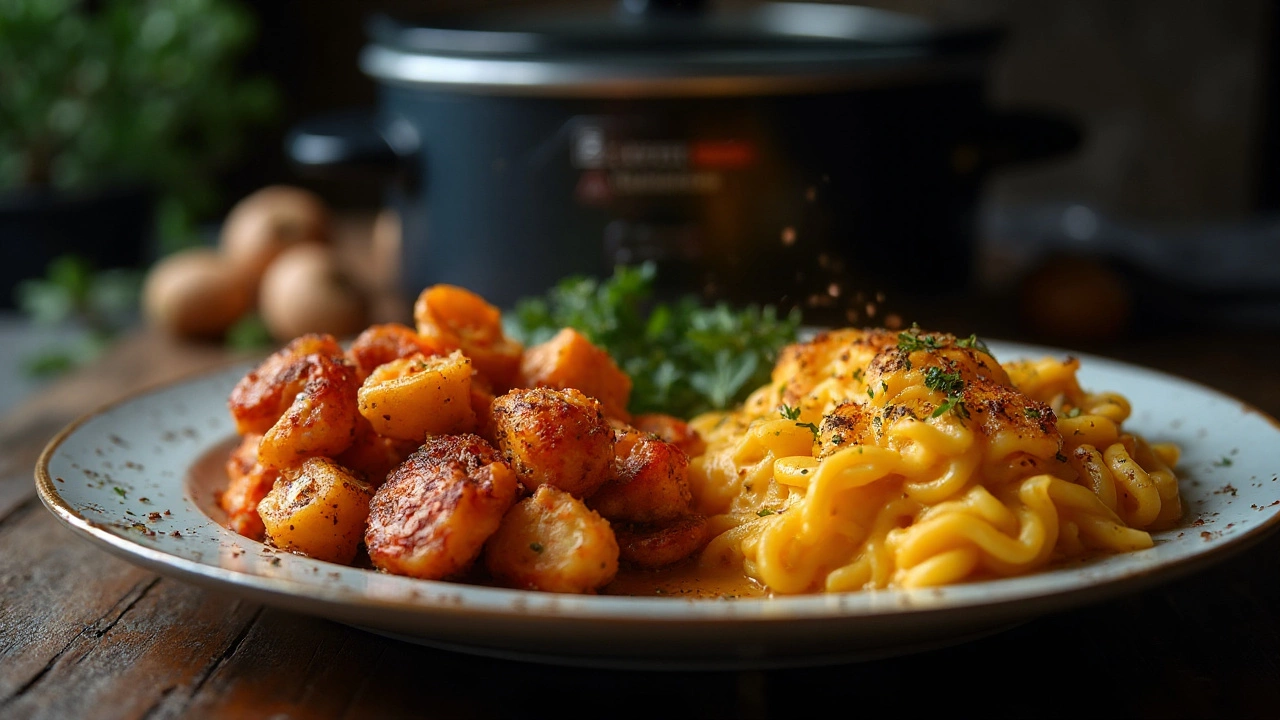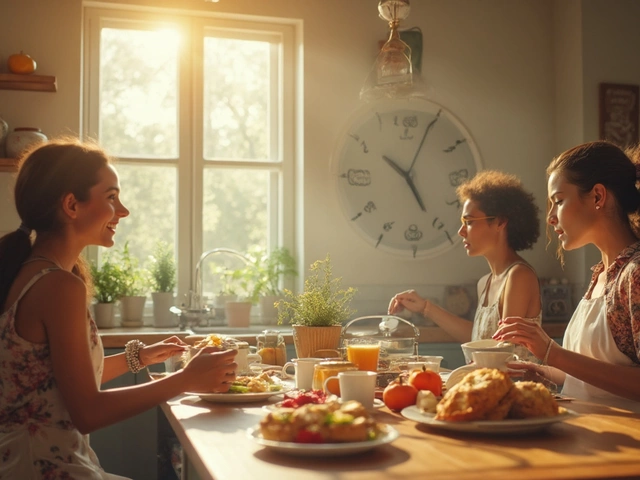
You toss in the ingredients, set the timer, and dream of dinner ready with zero fuss. The slow cooker is sorcery for busy folks or anyone who hates hovering over a hot stove. But what if I told you some foods actually turn to disaster in a slow cooker? Yeah, despite its reputation for handling nearly anything, there are ingredients that end up ruined, unsafe, or just plain weird when left to bubble all day. The scent of burnt dairy or rubbery seafood is a lesson you only need once. If you’ve ever found your chicken swimming in mystery liquid or your veggies mushier than baby food, you know the pain of a slow cooker fail. Here’s the straight talk on what never belongs in a crockpot, and why.
Why Certain Foods Flop in a Slow Cooker
First, let’s bust the myth that a slow cooker can handle whatever you throw in it. The way a slow cooker works is gentle heat over many hours, plus an environment that traps steam and moisture. This is gold for things like stews or shredded pork, but with some foods, this moist heat is straight-up their enemy.
Dairy tops the list. Think milk, cream, sour cream, delicate cheeses. Even when you add them low and slow, dairy can curdle or separate. A crockpot runs hotter on the sides than you might expect, and low-fat versions break down even easier. You’ll open the lid to find your soup suddenly full of odd, chunky bits. Who wants cheesy potato soup that looks like it lost a food fight?
Seafood is next. Ever tasted seafood that’s been in a slow cooker for six hours? It’s either mushy, dried out, or weirdly rubbery. Shrimp, scallops, and flaky fish don’t need much cooking at all. If you stick shellfish in your slow cooker at 10 AM, plan to serve rubber bands for dinner. If you must use them, add seafood in the last 15–30 minutes. Otherwise, even your cat (looking at you, Whiskers) will turn up her nose.
Pasta and many grains are famous culprits. I remember Phoebe once tried throwing dry noodles into the slow cooker before running errands. Big mistake. By the time we got back, we found gluey mush. Pasta, couscous, and quick-cooking rice soak up water rapidly and break apart with slow, extended heat. If you need pasta, cook it separately and stir it in at the end.
Leafy greens seem so innocent, right? Not so much. Spinach, kale, and other tender greens vanish under long heat—what’s left is bitty, stringy bits or none at all. Your vibrant soup turns a dull tie-dye of green, limp and flavorless. Unless you like green sludge, add fresh greens just before serving.
Fresh herbs aren’t safe either. Put basil, cilantro, or parsley in for the full cooking time, and you’re left with brown, tasteless specks. Dried herbs handle it better, but for that pop of flavor, fresh herbs go in at the very end. Trust me, the difference is night and day.
Delicate veggies—zucchini, bell pepper, peas, even asparagus—don’t do well with hours of heat. You’ll get soggy textures and faded colors. Crunch is gone, and taste isn’t far behind. Add those softies during the last stretch, or your perfectly balanced stew turns bland and sad.
Alcohol looms as a big surprise for some. Unlike stovetop simmering, slow cookers don’t burn off alcohol as much. When you drop wine or beer into a crockpot dish, you can get a boozy aftertaste that totally overpowers everything. Instead, go easy, or simmer alcohol-based sauces on the stove first to cook down the alcohol before adding.
Frozen meats, especially chicken, are a safety risk. Straight from the freezer, meats take too long to hit a safe temperature in a slow cooker, letting nasty bacteria like salmonella multiply. If you want chicken chili, thaw the meat first.
Last, there’s stuff that should never cook low and slow: lean cuts of meat (like chicken breast or pork loin), rare beef (like steak), or really fatty or gristly cuts (like lamb shank without trimming fat). Lean meats dry out; tough, fatty cuts ooze grease. Crockpot magic works best on tough, marbled cuts—but even those need some trimming.
Think of the slow cooker like a picky roommate: works hard, but only with the right stuff. Otherwise, your kitchen dreams can slide into weird lunches for Bryn’s lunchbox. Ready to pick your battles wisely?

The Science and Safety of Slow Cooking
Let’s talk science—the core reason behind many slow cooker letdowns. At its heart, a slow cooker is just a sealed pot with an electric heating unit that cycles heat. The steam and low temps mean food simmers instead of boils and almost nothing gets brown, crispy, or charred. This is why it works wonders for stews, but why cooking crispy fried chicken in a slow cooker fails every time.
Dairy, for example, contains proteins that curdle at temperatures above 180°F (about 82°C). Your slow cooker cruises in that ballpark, so the moment you leave soft cheese or milk in too long, things separate and get grainy. If you must have cheese sauce, make it on the stove and swirl it in at the end.
Eggs have a similar issue. Scrambled eggs, poached eggs, even a frittata—these go wrong in a crockpot. Slow, even heat turns them rubbery, as proteins firm up too much. The only time eggs shine is in bread pudding, and then you beat them with milk and treat the crockpot like a water bath. Keep the eggs elsewhere, unless you want breakfast disappointment.
Food safety is not a joke with poultry or ground meats. The USDA warns that bacteria like campylobacter and salmonella stay active between 40°F–140°F. If frozen chicken sits too long as the slow cooker heats up, these bugs can multiply before the center gets hot enough to kill them. The fix? Always thaw meats in the fridge before slow cooking, and cut large pieces so they cook evenly.
Alcohol is quirky with slow cooking because the lid traps vapors, so hardly any alcohol evaporates away. This keeps the alcohol content higher than in a sauce simmered uncovered. So, adding a cup of red wine to your coq au vin could leave it tasting harsh. Simmer or reduce on the stove first, then add for flavor without the boozy kick.
Veggies like potatoes and carrots seem built for long, slow heat—but not all are created equal. Root vegetables can take ages to become tender, so if you use too-large chunks, even after 8 hours you may still have crunchy bits. Chop them small and put on the bottom, where heated liquid collects.
On the flip, watery vegetables—like cucumbers or lettuce—go for a swim in their own juice and stay soggy. Tomatoes, especially fresh, tend to turn watery and bland. Tomato paste or crushed tomatoes hold up better for things like chili.
Rice and pasta: it’s the starch. These grains release their starch into the dish as they cook, so by the end, you’ll often wind up with a glue-like mess. Brown rice holds up slightly better than white, but most crockpot recipes instruct you to pre-cook rice and pasta then add at the end.
Let’s get into herbs a bit more. Extended slow cooking dulls out that fresh, punchy taste in rosemary or thyme, turning flavors muddy. Hardier herbs (rosemary, oregano) might survive in a stew, but tender ones (chives, dill) fizzle out. So, if you want that garden-fresh flavor, always, always add near the end. Phoebe’s pretty strict about this when she’s on lasagna soup duty.
Ever had a recipe call for pre-browning meat before tossing it in the slow cooker? There's a good reason. Browning creates deep, savory flavors (thanks, Maillard reaction), not just color. The slow cooker can't do this because nothing gets hot enough to brown. If you skip this step, you’ll still get edible meat, but you’ll miss that deep, complex flavor. It’s worth the extra pan to wash.
And let's be honest, not every meal is about convenience. If you’re after crispy, crunchy, or caramelized, keep that slow cooker tucked away. Sauté on the stove, fire up the oven, or get the grill going. The slow cooker is your friend for moist, melt-in-your-mouth dishes, not crispy-skinned chicken or browned onions.
For food storage, slow cooker leftovers need chilling quickly. Don’t leave them sitting out for hours; bacteria thrive in that post-cooking warmth. Get the pot in the fridge within two hours, and always reheat thoroughly—no lukewarm leftovers.
Here’s a sneaky fact: not all slow cookers are created equal. Older versions run cooler. Newer ones, especially with digital timers, run a bit hotter for food safety. So timing can be tricky, and results might change if you swap crockpots or use someone else’s recipe.
When you respect the science—temperature, timing, cooking method—you avoid kitchen fails and scary slips. Makes you feel like a hero at dinner time, every time.

Tips, Swaps, and When to Step Away from the Slow Cooker
So, you’ve got your shiny slow cooker on the counter. What now? First, remember one golden rule: it doesn’t make every meal better. Some foods belong in the oven or a pot. Embrace that freedom! But when you want to push the slow cooker limits, a few tweaks go a long way.
If you crave creamy sauces, don’t despair. Just wait until the final 30 minutes to stir in sour cream, milk, or cream cheese. This keeps sauces smooth and avoids the grainy mess. For cheese, opt for melting cheeses (like mozzarella or processed American), which break down silkier than cheddar or feta.
Missing crispy? Go hybrid. I love finishing ribs or chicken thighs in the oven or under a broiler. Start in the slow cooker, then transfer to a hot oven just before serving. You get tender meat with crispy skin—a win for everyone.
For seafood, remember: flash is best. You can add shrimp, white fish, or scallops during the last half hour or less. Keep an eye on them. Overcooked seafood is like chewing on an eraser, so less is more.
Fresh herbs—think of them as jewelry, not foundation. Sprinkle right before you eat, or even at the table. Same with lemon juice or vinegar. Bright, sharp flavors wake up a long-simmered stew instantly.
If you’re cooking with wine or beer, give it a quick simmer in a pan to burn off booze and mellow flavors. This small step keeps your dish balanced and family-friendly.
Pasta and rice? Pre-cook if you can, then reheat with sauce. If you must try one-pot, go with hearty shapes (penne over spaghetti), stir in near the end, and keep an eagle eye.
Love beans? Canned beans are fine, but dry beans (especially kidney beans) need pre-boiling. Raw red kidney beans pack a toxin called phytohemagglutinin—that’s a Scrabble winner and food hazard. Boil them for 10 minutes before using. Skipping this can make you sick, and no one wants a dinner with a side of regrets.
Cooking delicate veggies or greens? Hold them until the final hour, or even stir raw into hot soup right before serving. That way, you keep flavor, color, and crunch.
Want to thicken stews? Skip flour or cornstarch early on. Slow cookers trap moisture, so dishes can end up soupy. If you want thickness, use a cornstarch slurry at the end and cook until bubbly. Or mash some cooked beans or potatoes right in.
A few foods deserve the “not worth it” badge. Frying in a slow cooker is downright impossible—don’t try. Making candy, toffee, or chewy caramel also doesn’t work; you need rapid, dry heat. And rare meats? Use the grill, not the crockpot. My kid Bryn once asked for steak in the slow cooker—no dice. Steak turns gray and sad every time.
Sometimes it’s about timing. If you’re gone long days, use a timer or smart plug to avoid overcooked meat and veggies. Many newer models switch to warm automatically, but you still want food out of the danger zone within two hours.
Don’t forget to layer. Dense foods like root veggies (carrots, potatoes) go at the bottom—closest to the heat. Meats go above. This way, everything cooks evenly and safely.
Last, know your slow cooker’s quirks. Some run hot, some cool. Try a test recipe before the big family dinner. When in doubt, check with a food thermometer—165°F for poultry, 145°F for pork, and beef, at least 160°F for ground meats.
Nothing stings more than wasting good food. By understanding what doesn't play well with the slow cooker, you skip disappointments and step up your kitchen game. Stew, roast, braise, but leave shellfish, crispy dreams, and fancy soufflés for another day. Your family—and maybe even Whiskers—will thank you.




